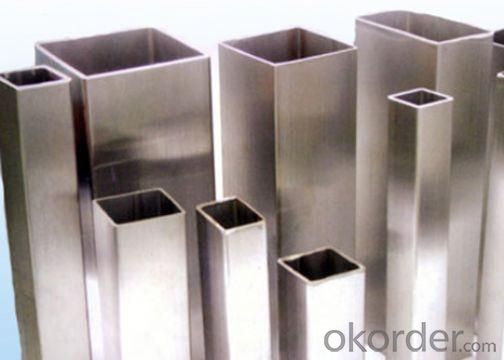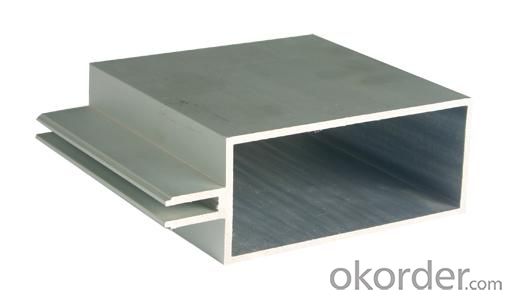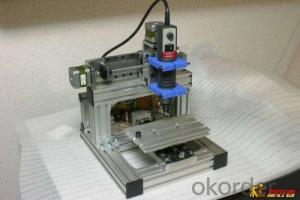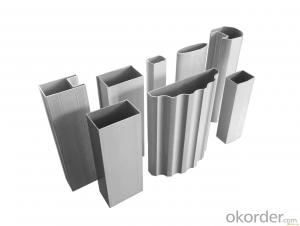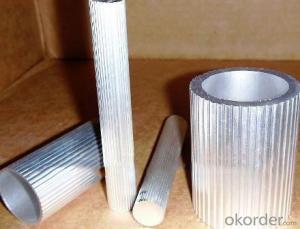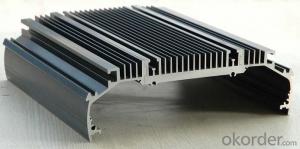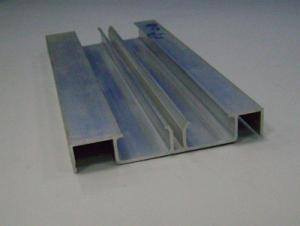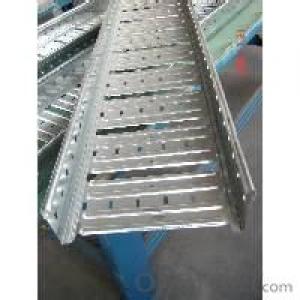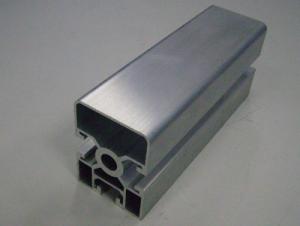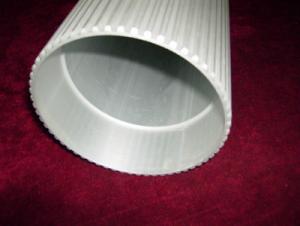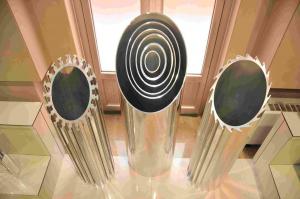Aluminum Extrusion Profiles - Aluminum Square Tube Profile
- Loading Port:
- China Main Port
- Payment Terms:
- TT OR LC
- Min Order Qty:
- -
- Supply Capability:
- -
OKorder Service Pledge
OKorder Financial Service
You Might Also Like
Specifications
Management Certification: ISO 9001:2008
Temper: O,F, H112,T4,T5,T6 and T8
Hardness: according to the alloy status
Specifications
1Aluminum alloy tube :AA3003/MOD/3005MOD/4343/7072/4104 etc
2,Temper: H14/24 etc.
3,For Radiator/Inter/oilcoolerEvaporator etc
1. Aluminum tube material for intercooler:
AA3003/3003+Zn/3003MOD/3004/3005/3005MOD/7072/4343/+zn/4045/+zn/4104/4004,etc
Per customer special requirement
Core alloy & Clad Alloy
3. Thickness Range:0.8mm≤T≤1.7MM (per customer special req.)
4.Width Range:10mm≤W≤1380mm
Product/Service (We Sell): | Aluminum coil, Aluminum foil, Aluminum plate non-cladded or cladded alloy) for
|
6. Packaging:
Per customer special requirement
Mark brazing side/non-braze side, water side
Clockwise /anticlockwise, eye to sky/eye to horizon
Cutting with paper core/aluminum core/steel core
Seaworthy Wooden Pallet standard; aluminum coils
- Q: What are the different surface treatments for aluminum profiles?
- Aluminum profiles can be treated with various surface treatments, each offering its own advantages and characteristics. Anodizing is a popular method that involves forming a protective oxide layer on the aluminum surface. This enhances the corrosion resistance and allows for the aluminum to be dyed in different colors, creating a sleek and modern finish. Another commonly used technique is powder coating, where a dry powder paint is applied and cured under heat to create a durable coating. This provides excellent resistance to scratching, chipping, and fading, making it perfect for applications that require long-lasting and vibrant finishes. Painting is a versatile option that allows for a wide variety of color choices and finishes. Aluminum profiles can be painted using different methods, such as spray painting or electrostatic coating. This creates a smooth and attractive appearance suitable for both indoor and outdoor use. For a distinctive and decorative look, brushing is a technique that involves brushing the aluminum surface with a wire brush or abrasive material. This creates a textured finish, often chosen for architectural and design applications that require a unique and stylish appearance. Ultimately, the choice of surface treatment for aluminum profiles depends on the specific requirements of the application. Factors such as corrosion resistance, durability, aesthetic appeal, and functionality all play a vital role in determining the most suitable surface treatment method.
- Q: How is the aluminum alloy profile series divided?
- The classification of aluminum alloy profile series has different classification results according to different classification standards.First, the use can be divided into the following categories:1. doors and windows of the construction of aluminum windows and doors (divided into two types of doors and windows and curtain wall).2. aluminum alloy shelf aluminum profiles, they are different from the shape of the cross-section. But they are produced by hot extrusion.3. aluminum industry: mainly used in automation equipment, sealing cover skeleton and the custom mold machinery and equipment according to their own requirements, such as assembly line conveyor belt, hoisting machine, glue machine, testing equipment, electronic machinery industry and clean room with!Two, according to alloy classification:Can be divided into 1024, 2011, 6063, 6061, 6082, 7075 and other alloy grade aluminum profiles, of which the 6 series are the most common. Grades are different in various metal components ratio is not the same, except for the commonly used aluminum profile doors and windows such as the 60 series, 70 series, 80 series, 90 series, curtain wall series aluminum profile, aluminum industry has no clear distinction model, most manufacturers are in accordance with the actual processing of customer drawings.Three, according to surface treatment requirements classification:1. anodized aluminum2. electrophoresis coating aluminum material3. powder spraying aluminum material4. wood grain transfer aluminum5., light aluminum (divided into mechanical polishing and chemical polishing two), including chemical polishing costs
- Q: This question asks for criteria or methods to determine if a specific aluminum profile is appropriate for a given project.
- <p>To determine if an aluminum profile is suitable for your project, consider the following factors: 1) Load-bearing capacity - Check if the profile can withstand the weight and stress it will be subjected to. 2) Dimensional requirements - Ensure the profile's size and shape match your project's specifications. 3) Corrosion resistance - Verify if the profile is resistant to the environmental conditions it will be exposed to. 4) Surface finish - Confirm if the profile's finish meets your aesthetic and functional needs. 5) Compatibility with other materials - Make sure the profile can be effectively joined or integrated with other materials in your project. Consult with an engineer or the profile manufacturer for specific recommendations based on your project's unique requirements.</p>
- Q: What are the different tolerance levels for aluminum profiles?
- The tolerance levels for aluminum profiles can vary depending on the specific application and requirements. However, some common tolerance levels for aluminum profiles include dimensional tolerances, such as length, width, and thickness variations, as well as straightness, flatness, and surface finish tolerances. These tolerances ensure the desired precision and consistency in the manufacturing and assembly of aluminum profiles.
- Q: This question seeks to understand the various types of aluminum profiles that are specifically used in the construction of building facades.
- <p>Aluminum profiles for facades come in various types, each serving different purposes and functions. Common types include: 1. <strong>Vertical and Horizontal Mullions</strong>: These are the primary structural elements that form the framework of the facade. 2. <strong>Transoms and Muntins</strong>: Used to divide the glass into panels, providing both aesthetic appeal and structural integrity. 3. <strong>Capping Profiles</strong>: These cover the ends of the mullions, providing a finished look and protecting the edges. 4. <strong>Cover Caps</strong>: Used to conceal the fasteners and provide a clean, streamlined appearance. 5. <strong>Angle Connectors</strong>: Facilitate the connection of different profile sections at various angles. 6. <strong>Gaskets and Seals</strong>: Ensure weatherproofing and insulation. 7. <strong>Accessories</strong>: Such as handles, locks, and hinges, which are integrated into the facade system. Each type is designed to meet specific performance requirements, such as load-bearing capacity, resistance to environmental factors, and aesthetic considerations.</p>
- Q: How to distinguish aluminum alloy series?
- The general term for aluminum profiles is the ratio of length and width. For example, 4040 is so long, 40mm width is 40mm, and so on.. ,
- Q: Can aluminum profiles be used in modular exhibition system manufacturing?
- Yes, aluminum profiles can be used in modular exhibition system manufacturing. Aluminum profiles are known for their lightweight and durable properties, making them ideal for constructing modular exhibition systems. They are easy to handle and assemble, allowing for quick and efficient installation and dismantling of exhibition booths. Additionally, aluminum profiles can be easily customized and reconfigured to meet specific design requirements, making them a versatile choice for modular exhibition system manufacturing.
- Q: How do aluminum profiles perform in thermal insulation applications?
- Aluminum profiles are not typically known for their excellent thermal insulation properties. However, they can still be used effectively in thermal insulation applications with the help of additional measures. Aluminum is a highly conductive material, meaning it easily conducts heat. This can result in significant heat transfer between the inside and outside of a building, leading to energy loss and reduced thermal efficiency. Therefore, aluminum profiles alone may not provide sufficient insulation. To enhance the thermal insulation performance of aluminum profiles, several strategies can be employed. One common approach is the use of thermal breaks or barriers. These are insulating elements placed between the exterior and interior aluminum sections to minimize heat transfer. Thermal breaks can be made of materials with low thermal conductivity, such as polyamide or polyurethane. Another technique is the implementation of double or triple glazing in windows and doors. By incorporating multiple layers of glass with a gap in between, the insulating properties are significantly improved, reducing heat transfer through the aluminum frames. Additionally, the use of low-emissivity (low-e) coatings on the glass surfaces can further enhance the thermal insulation performance. These coatings reflect heat back into the interior while allowing visible light to pass through, resulting in improved energy efficiency. In summary, while aluminum profiles have inherent limitations in thermal insulation, they can still be utilized effectively in thermal insulation applications by incorporating thermal breaks, double or triple glazing, and low-e coatings. These measures help to minimize heat transfer and improve energy efficiency, making aluminum profiles suitable for various types of buildings.
- Q: How to identify and distinguish the inferior aluminum profile and the poor aluminum profile four?
- The first price, whether manufacturers?.Poor quality of aluminum profileExtrusion defects. Is the extrusion process mature and suitable for operation?.Thin oxide film. Not less than 10um. Aluminum factory, production license, certificate of inspection.Unqualified chemical composition. The unqualified chemical composition seriously endangers the safety of building engineering.Reduce profile wall thickness. 90 series, the wall thickness is lower, not less than 1.4mm.
- Q: How do aluminum profiles perform in terms of magnetic properties?
- Aluminum profiles do not possess strong magnetic properties. Aluminum is considered non-magnetic as it is not attracted to magnets. This is due to its atomic structure, which does not facilitate the alignment of magnetic domains necessary for magnetic attraction. Therefore, aluminum profiles are generally not affected by magnetic fields and do not have any significant magnetic properties.
Send your message to us
Aluminum Extrusion Profiles - Aluminum Square Tube Profile
- Loading Port:
- China Main Port
- Payment Terms:
- TT OR LC
- Min Order Qty:
- -
- Supply Capability:
- -
OKorder Service Pledge
OKorder Financial Service
Similar products
Hot products
Hot Searches
Related keywords



